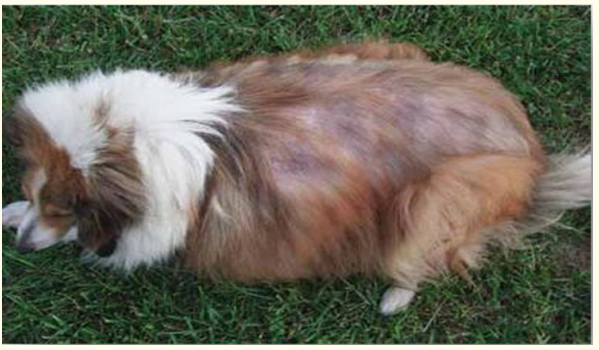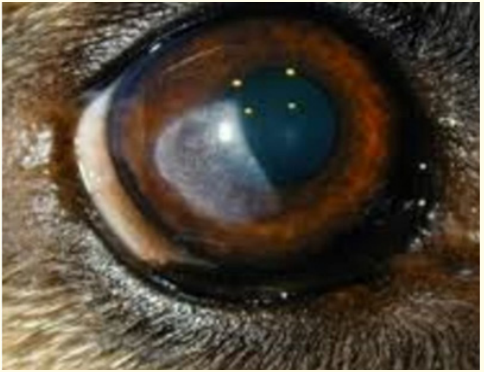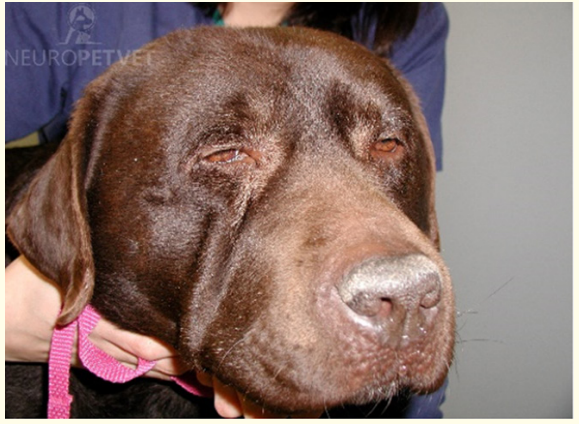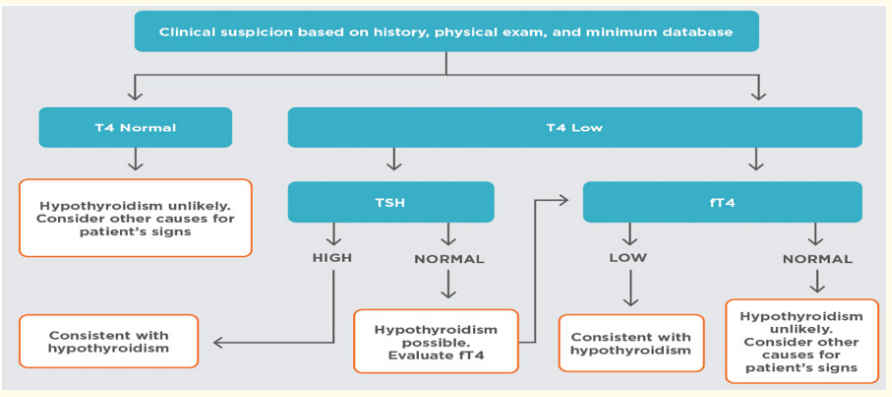Gurleen Kaur*
Veterinarian at Crown Vets Pet Clinic and Diagnostics, Punjab, India
*Corresponding Author: Gurleen Kaur, Veterinarian at Crown Vets Pet Clinic and Diagnostics, Punjab, India.
Received: July 24, 2024; Published: August 20, 2024
Citation: Gurleen Kaur. “Hypothyroidism in Dogs”. Acta Scientific Veterinary Sciences 6.9 (2024): 21-23.
Hypothyroidism is an endocrine disorder with impaired production and secretion of thyroid hormones T4 and T3, and a decreased metabolic rate. It has an estimated prevalence of 0.5%. Males and females are equally predisposed, but it is more prevalent in spayed females and neutered males.

Figure 1: Bilaterally symmetrical alopecia.
Characteristics Hypothyroidism are Obesity, lethargy, heat- seeking behaviour, myxedema, Tragic-facial expression, skin-abnormalities (bilaterally symmetric alopecia), cardiac abnormalities, ocular abnormalities.
Most cases are seen in middle- aged dogs (4-10 years of age). There is no sex predilection. Golden retrievers, German shepherds, Basenji, Dalmatian, Cocker-spaniel, Shetland sheepdog, Beagle, Siberian husky are breeds predisposed.
Thyroid gland loss appears to be the cause of over 95% of clinical cases in dogs. This impairs thyroid production and lowers serum thyroid hormone concentrations. To promote the production of thyroid hormone, TSH (thyroid stimulating hormone) rises.
Causes of Primary Hypothyroidism includes Lymphocytic thyroiditis (immune- mediated) and Idiopathic atrophy of thyroid gland (loss of thyroid parenchyma).
It occurs due to destruction of pituitary thyrotrophs, by an expanding, space occupying tumour.
Congenital primary Hypothyroidism:
It results from thyroid dysgenesis or dyshormogenesis (inherent ability to synthesise iodine). It occurs mainly due to thyroid peroxidase deficiency.
Most commonly reported in Giant Schnauzers, German shepherds and toy fox terriers, associated with disproportionate dwarfism, gait-abnormalities and constipation.
Rare cause of hypothyroidism, it develops when 75% of thyroid destruction has occurred.
Numerous metabolic processes are impacted by thyroid hormones, and low thyroid level results in constellation of clinical signs and laboratory abnormalities Signs related to lowering of cellular metabolism

Figure 2: Ocular findings.
It is the result of severe hypothyroidism, in which lethargy progresses to stupor and then coma.

Figure 3: Tragic facial expression.
Ultrasonography demonstrates decreased echogenicity and smaller thyroid lobes in hypothyroid dogs.

Figure 4: Diagnosis of Hypothyroidism.
While treatment is lifelong, the outlook is excellent.
Copyright: © 2024 Gurleen Kaur. This is an open-access article distributed under the terms of the Creative Commons Attribution License, which permits unrestricted use, distribution, and reproduction in any medium, provided the original author and source are credited.